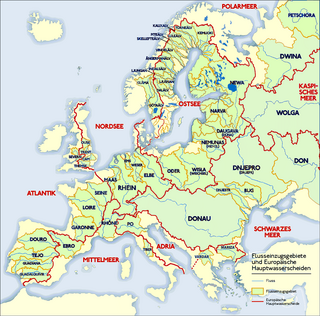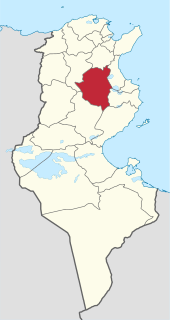
Kairouan Governorate is one of the twenty-four governorates of Tunisia. It is landlocked and in the centre-east of the country. It covers an area of 6,712 km² and has a population of 570,559. The narrower province of Sousse borders it to the east, the nearest coastline The capital is Kairouan. Lowland parts of the province are semi-arid, experiencing in most years light rains in the winter months and scant rainfall in other months but higher parts attract relief precipitation in and around the Djebel Zhagdoud and a large part of the Djebel Serj national parks, in the north-east of the province which are geologically outcrops of the Dorsal Atlas mountains in the province to the north.

Siliana Governorate is one of the twenty-four governorates (provinces) of Tunisia, is landlocked and is in the north of the country. It covers an area of 4,631 km² and has a population of 223,087 (2014 census). The capital is Siliana.

The delegations of Tunisia (mutamadiyah) are the second level administrative divisions of Tunisia between the governorates and the sectors (imadats). As of 2006 there were 24 governorates which were divided into 264 delegations (mutamadiyat) and further divided into 2073 sectors. The delegations are listed below, organized by governorate.

El Fahs is a town and commune located in the Zaghouan Governorate, 60 kilometers south-west of Tunis, Tunisia. Its population in 2014 was 23,561.
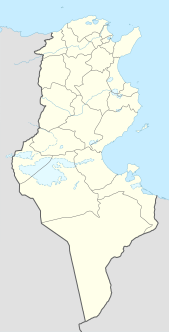
Aïn Djeloula is a small town and commune in the Kairouan Governorate of central Tunisia, situated 30 kilometers west of Kairouan and the eastern mountains of Jebel Ousselat. In 2004 it had a population of 1,651.

Ras Jebel, also known as Ras el-Djebel, is a town, commune, and archaeological site on Cap Sidi in the Bizerte Governorate of Tunisia. The name of the city refers to the summit or end of the mountain, thus evoking the end of the Atlas Mountains.

Oueslatia is a town and commune in the Kairouan Governorate, Tunisia. As of 2004 it had a population of 8,444. It is also the capital of a delegation with 36,195 inhabitants in the 2006 census.
Mezzouna is a town and commune in the Sidi Bou Zid Governorate, Tunisia. As of 2004 it had a population of 6,101.

Kesra is a town and commune in the Siliana Governorate, Tunisia. As of 2004 it had a population of 2,490. In 2014 this was 2600. Kesra is in Siliana Governorate near Maktar at 35.8N and 9.36e. The town is at altitude of 966m and is near the Jebel Serj national park. During the Roman Empire Kesra was a civitas of the Roman Province of Byzacena called Cusira.
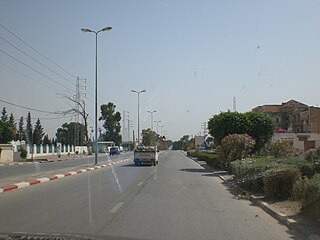
Gaâfour is a town and commune in the Siliana Governorate, north-western Tunisia, located 120 kilometers southwest of Tunis. It is attached to Siliana. As of 2004 it had a population of 9,358 people. The town has a station located on the railway linking Tunis to Kalaat Khasba.

Téboulba is a town in the Sahel region of Tunisia. It is located about 25 kilometers south of Monastir. It is part of the administrative governorate of Monastir, and is the county seat of the Delegation with the same name, which has a population of 37,485 people.

North West Tunisia or in is one of the six geographic and economic regions of Tunisia, it consists of four governorates : Béja, Kef, Siliana and Jendouba. The region had a population of 1,170,752 representing 12.2% of the total population of Tunisia. This makes it the 5th-most populous region in the country, with only South West Tunisia being smaller.
Urusi was a civitas and ancient episcopal see of the Roman province of Africa Proconsularis in present-day Tunisia.

The Jebel Serj National Park is a Tunisian national park situated between the delegation of South Siliana in the Siliana Governorate and the delegation of the Oueslatia in the Kairouan Governorate. This park of 6.64 sq mi was established on 29 March 2010 and it's managed by the Tunisian Ministry of Agriculture.
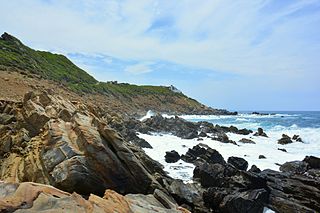
Jebel Chitana-Cap Negro national Park is a national park situated on the north coast of Tunisia, between the cap Serrat and the Sidi el Barrak Dam. It consists by the forest chain of Jebel Chitana, within forest district of Bizerte, and that of Bellif, dependent on the forest district of Béja.

Jebel Bargou is a mountain (Jebel) of Tunisia, which rises to 1266m altitude.
El Oued Siliana is a river of Tunisia in the region arising from Marktar, which runs north and drains into the river Medjerda about 5km west of Testour.
Henchir-Guennara is a locality and Archaeological site in Tunisia 53.5km southwest of Tunis,

The Chaîne du Thaljah is a range of mountains in the Gafsa Governorate of Tunisia. Huge deposits of phosphates were found at the base of the chain on 1885.
Central West Tunisia or in is the region located at the Central West of Tunisia which assembles Three of the following states: Sidi Bouzid, Kairouan and Kasserine.







